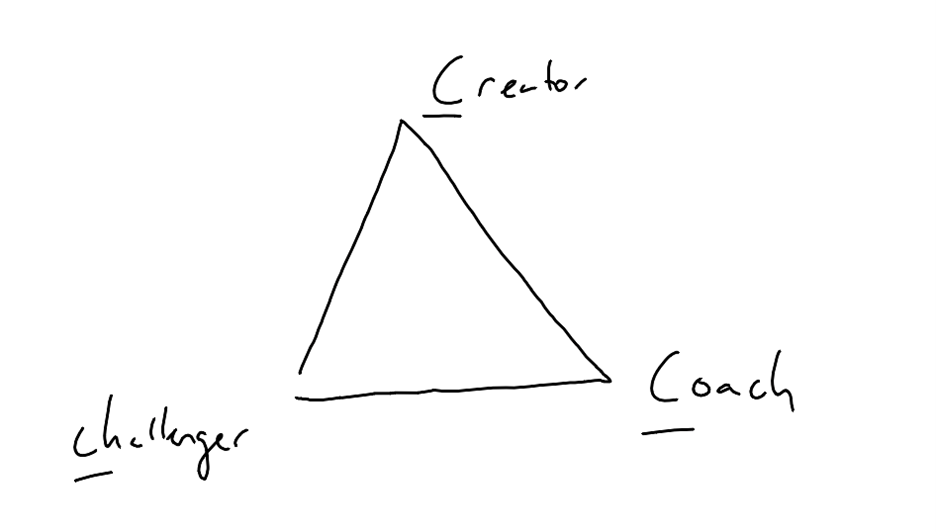The Rhumba Approach for Tough Conversations
I was being called onto the dance floor on a Friday night.
Five years of fatherhood means I have no moves, no rhythm, and I'm tired. Leave me alone with my old fashioned.
But I had to go. Otherwise I'd be that guy.
Fortunately, I was in a safe space — dueling pianos with Chelsea and friends. For a moment, it took me back to our pre-kid days when we took dance lessons and I actually knew steps beyond the basic push-pull.
Standing there, slightly uncomfortable with myself, I thought about all the times I find myself uncomfortable in crucial conversations.
The kind where emotions run high and the stakes matter.
Two weeks ago, I got a call that stopped me cold:
"Matt, he's pissed."
"How pissed?"
"Nine out of ten. Not good."
"Let's break bread on Monday with him. We need to talk this through."
Here's the thing about growth: misunderstandings are inevitable. Your team's complexity and talent evolve faster than your communication systems. It's a muscle you flex daily or it atrophies.
But family business gives you an advantage. No smoke and mirrors. No corporate theater. No hidden agendas from an investment firm in NYC. Just honest conversations about real issues.
I scheduled lunch, not nervous but curious. How could I communicate better?
Over bread, I asked simple questions: "How are you feeling? What's weighing on you?"
This teammate — someone essential who felt overlooked — opened up. He told me where we were failing him. Where the company was falling short.
In that moment, I had two dances to choose from.
Dance One: The Push-Pull
This is the Midwest special. Easy to learn, impossible to master, guaranteed to damage trust over time.
The roles rotate predictably:
Rescuer → Jump in and solve everything (creates dependence)
Persecutor → Get defensive or angry (forces compliance)
Victim → Play helpless (avoids responsibility)
Here's how it sounds:
"You say we're transparent, but we're not."
Boss: "Look, I'm doing my best to communicate ..." (Victim)
Employee: Now labeled as the unreasonable one (Persecutor)
Boss: "Actually, here's what you're missing, and here's what we're doing right ..." (Persecutor)
Round and round. Victim to persecutor to rescuer and back.
It feels productive in the moment. It's not. It's relationship erosion disguised as problem-solving.
I danced this dance for years. It's seductive because it's familiar. You can jump in without thinking, like that push-pull on any dance floor.
But when you're building something meant to outlast you? It's poison.
Dance Two: The Rhumba
This one requires practice. Probably a coach. (It has for me.) It's got nuance, intention, and grace under pressure.
You transform the triangle:
Rescuer → Coach (guide, don't do the work for them)
Victim → Creator (own the solution)
Persecutor → Challenger (confront with love and truth)
Same opening line. Different response:
"You say we're transparent, but we're not."
Me (Creator): "I'm sorry you feel that way. Help me understand — where specifically have we failed to be transparent?"
Him (Coach): "Here are three concrete examples where information didn't flow ..."
Me (Creator): "This is valuable feedback. We're building Century together, and our communication clearly needs work. I'm addressing these in Friday's town hall because of your feedback."
The difference? He felt heard. I learned something. We moved forward together.
Complaining is passion in disguise.
When redirected properly, it becomes fuel for improvement.
Those of us playing the long game — building companies meant to outlast us — we get to choose our dance. We can default to the push-pull that damages trust slowly, invisibly.
Or we can learn the harder dance. The one where people feel safe telling you the truth. Where problems become partnerships. Where crucial conversations build rather than erode.
Legacy isn't just what you build. It's how you build it.
The relationships. The trust. The way people feel after talking with you.
Choose your dance carefully.
Onward,
Matt


